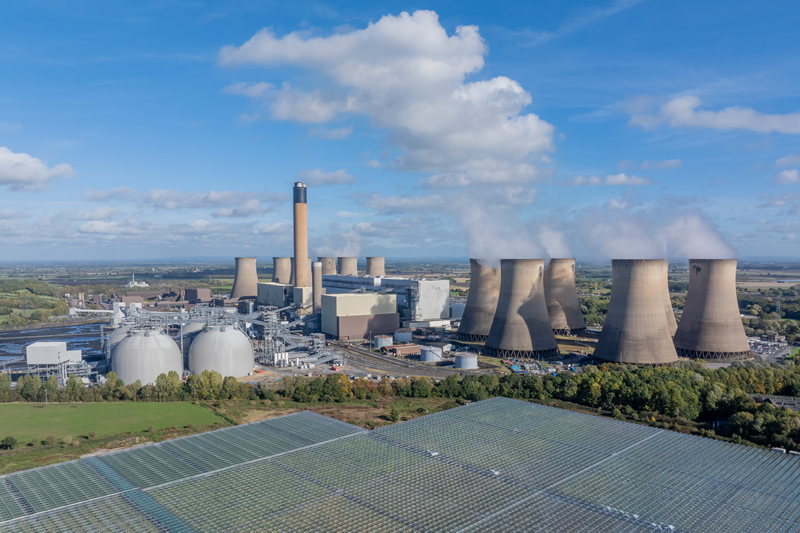Carbon Capture Surges as Economics Policy & Industry Demand Align
14
After years of skepticism and stalled progress, carbon capture and storage (CCS) is experiencing a dramatic resurgence. Once criticised as too costly, unreliable, or a lifeline for fossil fuels, CCS is now expanding rapidly driven by technological improvements, strong policy support, and rising demand from sectors like AI and data centers.

"The pace of interest and investment has snowballed,” said Jessie Stolark, executive director of the Carbon Capture Coalition. “Companies with hard-to-abate emissions are increasingly seeing CCS as a necessary tool in their decarbonization strategy."
A Shift in Momentum
CCS works by capturing CO2 emissions from industrial facilities, such as coal plants, steel mills, and cement factories, compressing the gas, and injecting it deep underground for long-term storage. While the concept is straightforward, early efforts in the 2010s faced significant setbacks due to high costs and technical challenges.
That changed when economic incentives aligned. The U.S. federal tax credit for CCS, known as 45Q, was enhanced in 2018 and expanded further under the Inflation Reduction Act in 2022. These incentives sparked a surge in development: the number of global CCS projects grew from 392 in 2023 to 628 in 2024. The U.S. now leads the world in active and planned CCS initiatives, outpacing the next four countries, Canada, the U.K., Norway and China combined.
Europe’s Big Bet
In Europe, CCS is now a core pillar of long-term climate strategy. Industrial emissions account for roughly 25% of the EU’s total, and reaching climate neutrality by 2050 will require drastic reductions, many of which can only be achieved through CCS.
To meet this challenge, the European Commission has launched an Industrial Carbon Management Strategy. Its targets are ambitious: 50 million tons of CO2 storage capacity by 2030, scaling up to 280 million tons by 2040 and 450 million tons by 2050, equivalent to about 13% of the EU's current emissions.
Achieving this will require sweeping infrastructure investments. Capture systems must be installed on power plants, cement kilns, hydrogen and chemical facilities, and waste incinerators. These sources will need to connect to an estimated 19,000 kilometers of CO2 pipelines across Europe. Temporary storage hubs will be built at ports, supported by a new fleet of CO2 transport ships. Meanwhile, depleted oil and gas reservoirs, at least 800 meters underground, must be surveyed and converted for permanent storage.
A Tool, Not a Silver Bullet
Despite the momentum, CCS remains controversial in some circles. Critics argue that it risks prolonging fossil fuel dependency and diverting attention from renewable solutions. Yet the technology's rapid adoption suggests it’s becoming a key part of the global decarbonisation toolkit, particularly for sectors where emissions are difficult or impossible to eliminate entirely.
In a world racing toward net-zero targets, CCS is no longer just a backup plan. It’s becoming a strategic necessity. Estimates vary, but a recent assessment puts the number of operational coal-fired power plants in the European Union at around 256. This figure remains fluid, as some facilities are being phased out while others may be temporarily reactivated in response to changing energy market conditions.
The largest power station in the UK is Drax Power Station, located in North Yorkshire. It's also the biggest renewable power station in the UK, generating enough electricity for 4 million homes. While historically a coal-fired plant, Drax has transitioned to using sustainable biomass, primarily wood pellets, as its main fuel source. Drax Power Station is the UK's largest single source of CO2 emissions, primarily from burning wood pellets for electricity generation. In 2023, it emitted 11.5 million tonnes of CO2, accounting for 2.9% of the UK's total territorial emissions.
Carbon Capture and Storage (CCS) could be key in the reduction in Carbon Dioxide (CO2) from industrial processes. Protea’s range of gas analysers have been used both in research into emerging technologies for CCS, but will also play an important role in the regulatory emissions monitoring from installations of CCS. Find out more about our CCS systems at https://www.protea.ltd.uk/carbon-capture-and-storage-ccs/.
#Protea #Emissions #Monitoring #CEMS #FTIR #Gas #Analysers #Shipping #Marine #Carbon #Capture
Other Articles
Global Underground CO2 Storage Data Offers Hope Amid Rising Emissions
01
IMO Postpones Adoption Of Global Net-Zero Shipping Framework
04
Pioneering Carbon Capture Projects Ready For Construction
03
Methanol & Ammonia Deemed Ready As Zero-Emission Shipping Fuels
01
Carbon Capture Storage Reaching A Turning Point In Decarbonisation
13
CCS To Capture 15% Of Shipboard Carbon Emissions By 2050
29
Global Shipping Industry Struggles To Navigate Net Zero Transition
21
GHG Emissions At Ports On The Rise Despite Initiatives
07
Carbon Capture Utilisation & Storage In A Nutshell
30